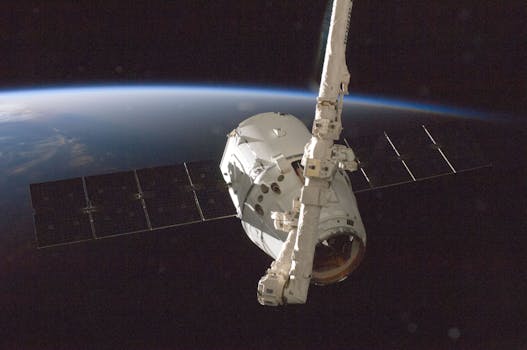
LEO Satellites: The Future of Global Connectivity
LEO satellites, or Low Earth Orbit satellites, are a type of satellite that operates in a low Earth orbit, typically at an altitude of around 160 to 2,000 kilometers. This allows for faster and more reliable connectivity than traditional satellite systems, which operate at much higher altitudes. The focus keyword for this article is LEO satellites, and we will explore the benefits and applications of this technology in-depth.
One of the primary benefits of LEO satellites is their ability to provide global coverage, even in areas where traditional communication infrastructure is lacking. This is particularly important for remote or underserved communities, where access to reliable internet and communication services can be a major challenge. LEO satellites can help to bridge this gap, providing fast and reliable connectivity to anyone, anywhere in the world.
Another key benefit of LEO satellites is their low latency, which is the time it takes for data to travel from the earth to the satellite and back again. Traditional satellite systems can have latency of up to 600 milliseconds, which can make real-time communication difficult. LEO satellites, on the other hand, have latency of around 20-30 milliseconds, which is comparable to fiber optic cables.
Applications of LEO Satellites
LEO satellites have a wide range of applications, from communication and navigation to earth observation and scientific research. One of the most exciting applications of LEO satellites is in the field of Internet of Things (IoT), where they can provide connectivity for devices in remote or hard-to-reach areas. This can enable a wide range of applications, from smart agriculture to smart cities, and can help to drive economic growth and development.
LEO satellites are also being used for earth observation, where they can provide high-resolution images of the earth’s surface. This can be used for a wide range of applications, from monitoring climate change to tracking natural disasters. The high-resolution images provided by LEO satellites can also be used for urban planning and infrastructure development, helping to create more sustainable and efficient cities.
Challenges and Limitations of LEO Satellites
While LEO satellites offer many benefits, there are also several challenges and limitations to consider. One of the primary challenges is the high cost of launching and operating a constellation of LEO satellites. This can make it difficult for companies to turn a profit, particularly in the early stages of development.
Another challenge facing LEO satellites is the issue of space debris. As the number of satellites in low Earth orbit increases, so does the risk of collisions and other accidents. This can create a significant amount of debris, which can pose a hazard to other satellites and spacecraft.
Conclusion
In conclusion, LEO satellites are an exciting and rapidly evolving technology that has the potential to revolutionize the way we communicate and access data. With their global coverage, low latency, and wide range of applications, LEO satellites are an attractive option for companies and organizations looking to provide fast and reliable connectivity to anyone, anywhere in the world.




